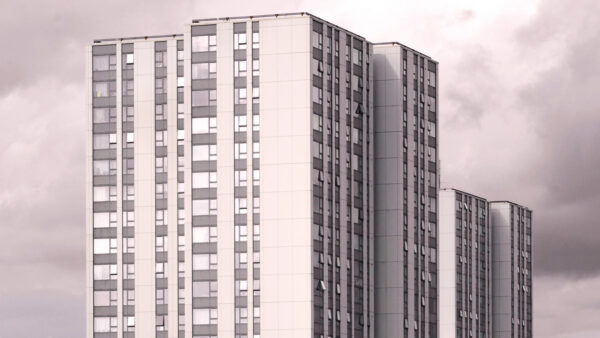The Building Safety Bill is a wasted opportunity – but it is not too late to change the proposals, says Jonathan Moulam.

The Association for Project Safety (APS) has three key suggestions to make buildings safer: addressing safety up front by making building safety an explicit requirement in the Building Safety Bill; insuring the future by providing government backed indemnity insurance; and holding people to account by clarifying the principal designer roles.
Let’s examine these proposals in more detail.
1. Safety up front – make building safety an explicit requirement in the legislation
The Association for Project Safety (APS) supports moves to make construction projects safer for residents, other end-users and for construction workers.
The association believes Government could strengthen the intent of the Bill by placing greater emphasis on all building safety risks from the outset. They could do this by inserting a new clause to the Bill that expressly requires building safety risks to be assessed and managed. This would be required of designers of all building work in accordance with the same principles of prevention being mandated for the occupation phase of higher risk buildings (HRBs).
Making managing building safety risk an explicit requirement would ensure that residents will not be forced to bear the costs of managing building safety risks that could have been avoided, or reduced, during the design of building work.
The association believes this simple change would make:
- A second Grenfell less likely and remove any possible confusion over who is responsible;
- Projects cheaper as safety would be fully costed from the outset; and
- Residents financially better off as, currently, it’s a case of ‘build in haste and repent at leisure’ with residents bearing more of the cost of putting things right where bad or cheap choices – that should be the responsibility of the developer – are made at the outset.
The current Bill would let developers choose and install fire alarm systems and emergency lighting that may: be inherently less safe; need to be physically tested with all the costs and risk that implies; and only meet minimum requirements.
2. Insuring the Future – providing government backed indemnity insurance
APS supports the desire of legislators to ensure people pay for the adverse impact of their failures to meet the requirements of the law have on the lives of people living in buildings over four storeys high.
The association believes the government should consider putting in place special underwriting provisions – such as they did for home insurance in Northern Ireland or for homes in areas prone to flooding – so that household premiums could be kept to an affordable level.
The association believes the requirement for compensation to paid out for up to 30 years, for existing properties, and 15 years, for new flats [Clause 128], could have unforeseen consequences as a whole including:
- Proposed new roles being uninsurable or deliverable only by a few large companies able to obtain the required cover; and
- Developers suing their supply chain to recover costs. Prices would go up for everyone, residents and homeowners would see costs being passed on to them in higher rents or purchase prices, the construction industry could face significantly increased premiums, and professional indemnity insurers would pass on the increased costs that reflect the greater risk they face.
Both likely situations could lead to:
- Skills shortages – around 70% of people working in construction design forced out of practice as they be unable to obtain or afford professional indemnity insurance and for those remaining to have to continue paying PII until they are in the 80s.
- Professional indemnity insurance likely to increase in cost by around 40–50% a year. The APS has already had one reported case of a member whose increase premium has gone up from around £2,000 to £9,000 a year.
- Unavailable and unaffordable homes – the government is unlikely to meet its targets for affordable new homes as the construction sector may avoid building flats. Low rise homes will reduce the number of homes built and consequently these homes will increase in price to compensate for the reduced density.
3. Holding to account – clarifying the Principal Designer roles
APS supports moves to ensure people responsible for causing deaths and damage in building of over 18 metres should be easy to identify and simple to hold to account.
The association believes the Government should consider adding a duty that any building covered by the Bill must be safe both to build and in use.
The association believes this could provide:
- Greater clarity over the Principal Designer duty holder. This would ensure that waters of responsibility are not muddied and only the dutyholder responsible for adherence to the building regulations and CDM2015 would be necessary. We note the current proposed legislation is, in effective, creating two PD roles each having separate responsibilities for construction design management and for adherence to building regulations; and
- Cost savings for residents and government by streamlining responsibilities with one dutyholder – not two – responsible for safety, and preventing costly cross-litigation where those potentially responsibility for defects countersuing each other if things go wrong.
Jonathan Moulam is president of the Association for Project Safety.











